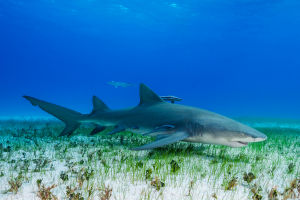When we think of sharks, most of us picture sharp teeth, sleek fins, and lightning-fast attacks. They're often portrayed as the ultimate hunters of the ocean. But did you know that these powerful creatures also need rest—just like us?
Underneath their fearsome image lies something surprisingly relatable. Sharks have families, search for food to survive, and yes—they sleep. But how does a creature that’s constantly on the move manage to get some shut-eye? Let’s dive into this ocean mystery.
The Real Deal About Shark Sleep
We’ve always been curious—how do sharks sleep? For years, scientists have tried to uncover the secrets of shark slumber. But before we understand their sleep habits, we need to challenge our stereotypes. Sharks are more than just predators. Their biology is full of unique adaptations.
To explore this topic, we first have to ask: what is sleep? In most animals, sleep means staying still, relaxing the body, and being less aware of the surroundings. Some species like lemon sharks have been seen resting quietly on the ocean floor. White-tip reef sharks hide in caves without moving, and nurse sharks in aquariums spend a lot of time lying still.
Eyes Half Closed, Awareness Half On
Another clue to sleep is eye behavior. For example, nurse sharks often rest with their eyes half closed. If a shark’s reaction to its environment slows down—like when a nurse shark stops responding to nearby divers—it might be asleep.
But here’s the challenge: many sharks must keep swimming to push water through their gills and breathe. So how do they sleep without stopping?
That’s where the magic of unihemispheric slow-wave sleep (USWS) comes in. This means one side of a shark’s brain rests while the other stays alert. It’s a smart solution—allowing them to stay aware of danger and breathe, all while getting the rest they need.
Adapting to Rest Without Stopping
Different shark species have evolved various ways to breathe while resting. Great white sharks, for example, rely on a method called “ram ventilation”—they must swim to push water over their gills.
Nurse sharks, however, use muscles in their mouths and necks to pump water through their gills. Some species even have small openings called spiracles behind their eyes, letting them pull water in while remaining still. These clever tricks allow sharks to get oxygen even while staying in one spot.
Shark Sleep Studies: What We Know So Far
In 2020, scientists made a breakthrough. They discovered that tiger sharks and tasselled wobbegong sharks showed slower metabolic rates and lower awareness at certain times—suggesting they were truly asleep. Sometimes their eyes closed, and other times they stayed open. Their bodies flattened, resting parallel to the sea floor.
Different Sharks, Different Sleep Habits
Not all sharks sleep the same way. Gray reef sharks, for instance, like to rest in reef caves or crevices. These spots not only slow their movement but also protect them from predators and ocean currents.
Great white sharks—known for long-distance swimming—have a unique rest pattern too. Scientists have observed a behavior called “yo-yo swimming,” where they rise and fall in the water column. This lets them rest while still keeping some movement.
Shark Sleep is Still Evolving
Sleep duration and style vary across species. A 2022 study revealed that tasselled wobbegongs likely enter sleep after just five minutes of rest, marked by reduced metabolic activity. Tiger sharks also seem to rest at night, when their activity decreases.
Over the past 400 million years, sharks have developed incredible adaptations. Their ability to rest while swimming shows how evolution shaped their survival strategies. USWS sleep gives them the perfect balance—resting while staying alert.
Want to See Sharks Sleeping Up Close?
For diving enthusiasts, swimming near sharks is unforgettable. Seeing them in their natural habitat is humbling and thrilling. It also reminds us how important sharks are in keeping marine ecosystems healthy.
Whether it’s the elegant movements of reef sharks or the sheer size of a whale shark, we can’t help but be amazed. Want to deepen your knowledge and diving skills? You can join courses like marine ecology awareness or shark conservation to learn more about the ocean’s delicate balance. If you’re just starting out, an open water diving course is a great first step. And for those who love freedom in the sea, freediving offers an entirely new experience.
Rest Isn’t Just for Us
So Lykkers, next time you think of sharks as tireless ocean predators, remember—they nap too! Their unique way of resting while staying alert shows just how smart nature can be. Sharks teach us that even the most powerful need a break sometimes.
Let’s continue to explore the wonders of the sea together. If you’ve ever spotted a shark while diving, share your story with us—we’d love to hear about your ocean adventures!


